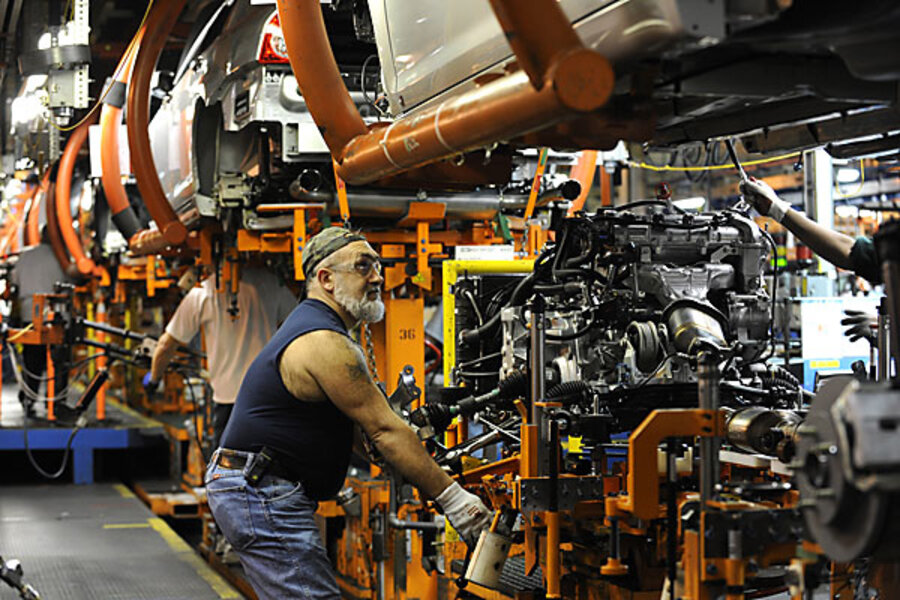Slow decade ahead for US, not a lost one
Does America face a "lost decade," such as Japan suffered in the 1990s?
After all, Japan in that decade saw a massive real estate price bubble burst, leading to huge write-downs by commercial banks, deep recession, and – since the late 1990s – sustained stagnation and deflation. The United States has experienced something similar – a financial crash, the Great Recession, a bad slump in housing prices, and minute inflation.
"We are in for a weak decade. But not as bad as Japan suffered," predicts Nigel Gault, an economist with IHS Global Insight, a major economic consulting firm in Lexington, Mass.
Usually, after a serious slump, the American economy revives at perhaps a 7 percent growth rate, says Alan Levenson, chief economist for T. Rowe Price, a mutual-fund management giant based in Baltimore. This time, the US economy is only "gradually gaining momentum."
He expects US gross domestic product, the country's output of goods and services, to grow at a 2.5 to 2.75 percent annual rate for the next few quarters, after adjusting for inflation. So unemployment will only decline from 9.6 percent to 8.5 percent by the end of 2012, Mr. Levenson figures. The jobless rate may not get back to an acceptable, or "natural rate," of 5 to 6 percent until the end of the decade, guesses Mr. Gault.
In the wake of Japan's experience, US policymakers have taken much more aggressive measures to boost the economy than Japan's did. For example, the Japanese banking crisis occurred in 1997; the Bank of Japan responded in 2002. By contrast, the 2008 banking crisis in the US elicited a 2009 response from the Federal Reserve, when it saw inflation so low it feared Japanese-style deflation. Deflation is "hard to get out of," notes Levenson.
US inflation today remains low, at 0.6 percent for the 12 months through October 2010. That extremely low rate recently encouraged Fed chairman Ben Bernanke to launch a new "quantitative easing" plan to buy $600 billion in longer-term government securities in the next eight months – on top of $1.8 trillion in earlier purchases. He is in effect printing money to keep interest rates low.
US financial firms have also been faster than Japan's banks to write off losses. Banks, says Gault, "have just started to ease their credit standards," making it easier for business to get loans.
What are the economic risks ahead?
One, Gault says, is letting the Bush tax cuts expire "deliberately or inadvertently." Such a fiscal measure would tend to reduce consumption, and thus slow the economy. But if only the tax cuts for the rich end next month, as proposed by President Obama, the well-to-do will tend to reduce their savings rather than cut their expenditures, Levenson maintains.
Another risk is that quantitative easing will lead to higher inflation. Fed policymakers "know there are risks involved in being as aggressive in supporting a weak economy," says Levenson. "I don't think the risks have been fully appreciated."
But neither economist anticipates rapid inflation soon. They figure the Fed will take money out of the economy should prices start to rise.
Last summer much attention was given a study by Profs. Kenneth Rogoff of Harvard University and Carmen Reinhart of the University of Maryland showing that historically a major economic crisis in nations leads to slow growth and high unemployment for a decade. Today's economic prospects are low enough to confirm that study, says Levenson. But it won't be a lost decade.
•David R. Francis writes a weekly column.





